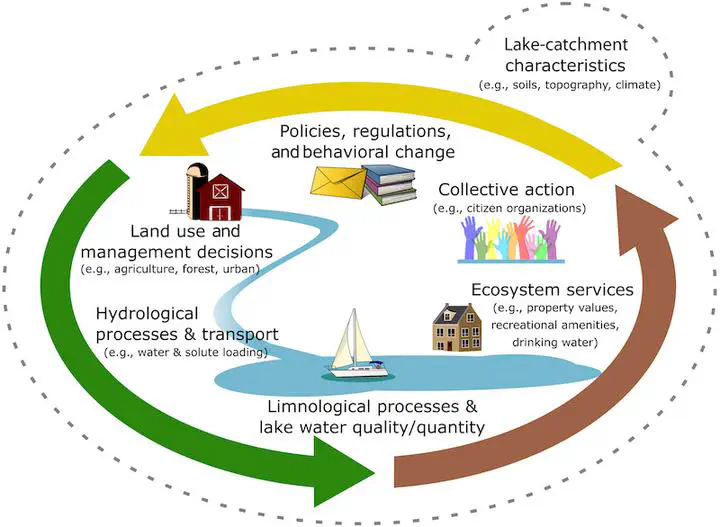From concept to practice to policy: modeling coupled natural and human systems in lake catchments
 Conceptual framework for a coupled natural–human system in a lake catchment.
Conceptual framework for a coupled natural–human system in a lake catchment.摘要
Recent debate over the scope of the U.S. Clean Water Act underscores the need to develop a robust body of scientific work that defines the connectivity between freshwater systems and people. Coupled natural and human systems (CNHS) modeling is one tool that can be used to study the complex, reciprocal linkages between human actions and ecosystem processes. Well-developed CNHS models exist at a conceptual level, but the mapping of these system representations in practice is limited in capturing these feedbacks. This article presents a paired conceptual-empirical methodology for functionally capturing feedbacks between human and natural systems in freshwater lake catchments, from human actions to the ecosystem and from the ecosystem back to human actions. We address extant challenges in CNHS modeling, which arise from differences in disciplinary approach, model structure, and spatiotemporal resolution, to connect a suite of models. In doing so, we create an integrated, multi-disciplinary tool that captures diverse processes that operate at multiple scales, including land-management decision-making, hydrologic-solute transport, aquatic nutrient cycling, and civic engagement. In this article, we build on this novel framework to advance cross-disciplinary dialogue to move CNHS lake-catchment modeling in a systematic direction and, ultimately, provide a foundation for smart decision-making and policy.